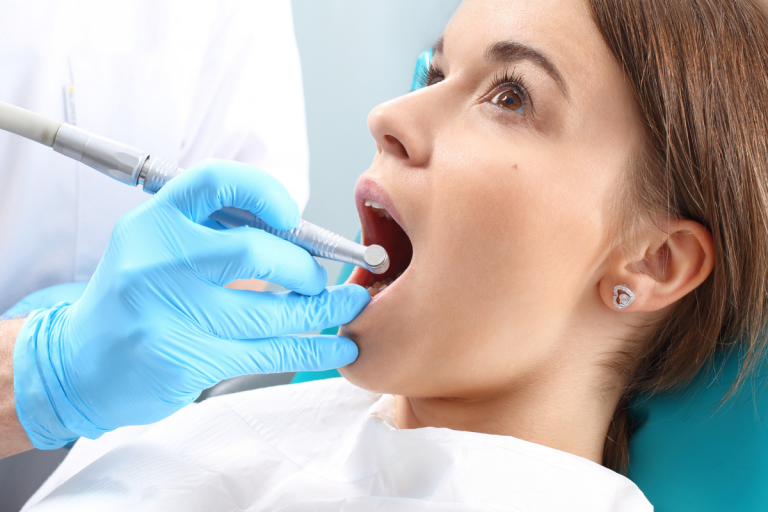oral hygiene
Why is it so important to have good oral health?
Gum diseases (periodontal disease) causes more tooth loss in those over 35 than cavities. At some point in their lives, three out of every four adults will be affected. The greatest strategy to avoid cavities and periodontal disease is to brush and floss your teeth on a daily basis.
Bacterial plaque causes both periodontal disease and tooth decay. Plaque is a whitish coating that forms on the gum line of your teeth. Plaque forms on your teeth on a regular basis. You may remove these germs and help prevent periodontal disease by brushing and flossing your teeth thoroughly every day.

Is a dental cleaning painful?
While most people only suffer little discomfort and agony when having their teeth cleaned, there are a few conditions that can make the procedure more painful:
- Inflammation, gum disease, or tooth decay can cause dental sensitivity.
- Whe cleanings are spaced out over a long length of time.
- Temporomandibular conditions can cause jaw pain.
Any pain should be communicated to the Dr Linique. To relieve pain, the she may allow you to take a break or attempt an alternative procedure.

9 Ways to Keep Your Teeth in Good Shape
- Brush your teeth before going to bed.
- Brush your teeth thoroughly and don’t forget to brush your tongue.
- Fluoride toothpaste should be used.
- Consider using mouthwash.
- Flossing is as vital as brushing.
- Increase your water intake.
- Consume crisp fruits and vegetables.
- Sugary and acidic foods should be avoided.
- At the very least, see your dentist twice a year.
What Happens When You Get Your Teeth Cleaned?
Tooth cleanings are dreaded by many people. It’s easy to understand their trepidation given the prodding, unusual noises, and occasional jaw soreness. However, for the majority of people, a tooth cleaning is straightforward and painless.
Knowing exactly what’s going on during the process can help you relax and enjoy the minty-fresh results even more.
1. Examination
Dr Linique begins by performing a physical examination of your entire mouth before beginning the cleaning process.
Afterwards, she inspects your teeth and gums with a small mirror for symptoms of gingivitis (inflamed gums) or other potential problems.
2. Plaque and tartar removal
Dr Linique uses a scaler to remove plaque and tartar from around your gum line and in between your teeth, guided by the little mirror. You’ll hear scraping, but that’s to be expected. The more tartar in your mouth, the longer it will take to scrape a certain area.
Plaque is prevented from forming and hardening into tartar by brushing and flossing. Tartar may only be removed at your dentist’s office once it has formed. If this is your least favorite aspect of the teeth-cleaning routine, the lesson is to brush and floss more frequently.
3. Cleaning with a grittier toothpaste
Your teeth are brushed with a high-powered electric brush when they are entirely tartar-free. It produces a grinding sound While it may appear frightening, it is a fantastic way to obtain a thorough cleaning and eliminate any tartar left behind by the scaler.
Professional cleanings apply toothpaste that smells and tastes like conventional toothpaste, with the option of selecting from a variety of flavors. It does, however, have a gritty texture that softly washes your teeth. This tooth polishing is considered safe to undertake twice a year if done by an expert. At home, however, don’t be as rough with your teeth because you’ll wear down the enamel.
4. Professional flossing
Nothing beats a professional flossing session, whether you floss at home or not. Dr Linique can look deep between your teeth for any potential issue locations where your gums may bleed. This may not always be needed, especially when the patient practices good oral hygiene.
If you floss at home, this may seem superfluous, but having a professional floss your teeth removes any residual plaque or toothpaste from the cleaning process.
6. Utilizing fluoride as a treatment (Optional)
Our Fluoride Treatment is available on request, at an additional charge. This treatment is applied to your teeth as a preventative measure to help you avoid cavities for several months.
The frothy gel (or sometimes a sticky substance) will next be placed in a mouthpiece that fits over your teeth. It’s normally left on for one minute on your teeth. Fluoride varnish is applied to the teeth using a little brush in addition to the foamy gel. When fluoride varnish comes into touch with saliva, it hardens, allowing you to eat and drink right away.
